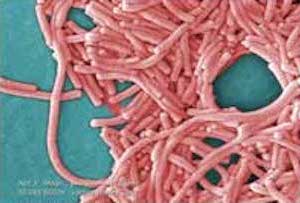The ongoing water crisis in Flint, MI has drawn national attention as residents and researchers alike question whether the city’s untreated water supply could have caused a significant spike in Legionnaires’ disease cases in 2014 and 2015.
Although the complete number of known Legionnaires’ disease fatalities in Genesee County has been lowered from 10 to 9 by Michigan Department of Health and Human Services (MDHHS) based on further epidemiological analysis, there are currently 87 cases of the dangerous illness confirmed for the period between June 2014 and November 2015. This was an increase from an average of 6 to 13 annual cases countywide to 42 cases in 2014 and 45 cases in 2015.
MDHHS has stated that they “can’t conclude that the increase is related to the water switch in Flint nor can we rule out a possible association at this time.”1
Was Legionella Bacteria in Flint’s Drinking Water and Did it Cause Illness?

Legionella bacteria, the pathogens that cause Legionnaires’ disease, are ubiquitous in the environment, typically residing in aqueous settings and potting soil. Although most healthy people do not contract Legionnaires’ disease, those who are older than 50 and / or have compromised immune systems or underlying health conditions are at risk for catching it when they either a) breathe in the bacteria in aerosolized water (radiating from cooling towers, hot tubs, fountains, or showerheads) or b) aspirate the water into their lungs while drinking.
A team of Virginia Tech scientists, headed by Dr. Marc Edwards and tasked with investigating Flint’s water late last year under a National Science Foundation RAPID grant, explored the hypothesis that:
“the rapid corrosion of iron water mains in Flint would dramatically increase growth of Legionella in buildings. Mechanistically, higher rates of iron corrosion will produce: 1) higher iron in water, and 2) lower levels of free chlorine. Both of these factors were confirmed to be present in Flint during our field sampling, and have been shown to dramatically increase Legionella regrowth in our recently published laboratory research utilizing simulated distribution systems.”2

Ultimately, however, they were forced to conclude that they could not prove an absolute link between the water supply and the Legionnaires’ cases because earlier investigators of the 2014 outbreak failed to collect “bacterial isolates from patients for comparison to those in the environment.“4 They went on to say:
“That being said, of the 35 patients for which the report detailed household water source information, 60% received Flint water at home. In addition, 44% of patients without a presumed health-care transmission route were on Flint water, which is a disproportionate number considering the city makes up less than a quarter of the county’s population. These figures, combined with the fact that nearly half of surveyed patients’ homes were impacted by a main break, seem to suggest a very strong likelihood that the corrosion problem with Flint River water (and associated low chlorine residuals) played a role in the surge in Legionnaire’s disease.”4
Details regarding the city’s culpability in failing to treat its municipal water with anti-corrosive agents – leading to heightened levels of lead in many children – are continuing to emerge.
Our law firm is not taking these cases.
Sources:
1) Wisely, John and Tanner, Kristi. “State officials decrease number of Legionnaires’ deaths.” Detroit Free Press. Web. 21 Jan. 2016 [date cited: 22 Jan. 2016].
2) Roy, Siddhartha. “Possible Links Between Flint River Water (Without Corrosion Control) and Higher Legionella Occurrence.” Flint Water Study Updates. Web. 13 Jan. 2016 [date cited: 22 Jan. 2016].
3) Roy, Siddhartha. “Initial Frequently Asked Questions (FAQ) regarding Legionella bacteria in present-day Flint.” Flint Water Study Updates. Web. 13 Jan. 2016 [date cited: 22 Jan. 2016].
4) Roy, Siddhartha. “Legionnaire’s Disease Possibly Associated With Flint River Water Supply.” Flint Water Study Updates. Web. 15 Jan. 2016 [date cited: 22 Jan. 2016].